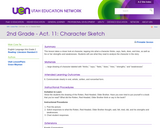
In this lesson, students use what they read to analyze the character in the story.
- Subject:
- English Language Arts
- Material Type:
- Lesson Plan
- Provider:
- Utah Education Network
- Author:
- Utah Education Network
- Date Added:
- 04/23/2018

In this lesson, students use what they read to analyze the character in the story.
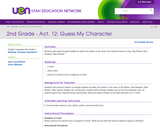
In this lesson, students create thought bubbles for either the brother or the sister from Patricia Polacco's story, "My Rotten, Red-Headed, Older Brother".

Students will construct an animal catching machine using found materials. You may want to reread the book in order to help students get ideas!

This resource accompanies our Rethink 2nd Grade ELA course. It includes ideas for use, ways to support exceptional children, ways to extend learning, digital resources and tools, tips for supporting English Language Learners and students with visual and hearing impairments. There are also ideas for offline learning.

This parent guide supports parents in helping their child at home with the 2nd Grade English Language Arts content. Within the folder you will access Parent Guide PDFs in FIVE Languages: Arabic, English, Hindi, Spanish, and Vietnamese to help on-going communication with caregivers.
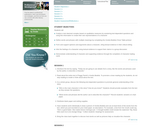
In this lesson, students will read Amelia Bedelia by Peggy Parish. Students will discuss text-dependent questions to promote an understanding of the story’s character. Through subsequent readings, they construct and support arguments concerning the character traits of Amelia Bedelia and use the text to determine how Amelia Bedelia and the Rogers can have different reactions to the same events. After these discussions, students demonstrate their understanding of character by completing a trading card for Amelia Bedelia.

This lesson is for Grades 1 - 2 on literacy. At Home Learning Lessons are a partnership between the North Carolina Department of Public Instruction, PBS North Carolina, and the William and Ida Friday Institute for Educational Innovation. Each lesson contains a video instructional lesson, a PDF lesson plan with a transcript, and a PDF file of extension activities.

This lesson is for Grades 1 - 2 on literacy. At Home Learning Lessons are a partnership between the North Carolina Department of Public Instruction, PBS North Carolina, and the William and Ida Friday Institute for Educational Innovation. Each lesson contains a video instructional lesson, a PDF lesson plan with a transcript, and a PDF file of extension activities.

This lesson is for Grades 1 - 2 on literacy. At Home Learning Lessons are a partnership between the North Carolina Department of Public Instruction, PBS North Carolina, and the William and Ida Friday Institute for Educational Innovation. Each lesson contains a video instructional lesson, a PDF lesson plan with a transcript, and a PDF file of extension activities.
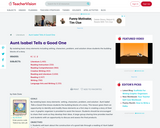
In this lesson, students identify the setting, main characters, the problem, and solution. Students also create a new solution to the text.

In this unit, students will read several books by Kevin Henkes. Students will study the characters, retell the stories, and will compare and contrast the plots of the different stories written by Kevin Henkes.
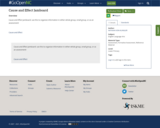
Cause and Effect Jamboard: use this to organize information in either whole group, small group, or as an assessment! Cause and Effect
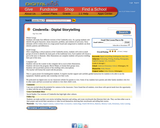
In this lesson, students will study four different versions of the Cinderella story. As a group students will identify the good characters, mean characters, problem, and solution of each story. Story elements will be written down on a large poster board and categorized so students can draw identify patterns and differences. Then, students will work in small groups of seven to identify the main parts of the traditional story. Each student will choose a part in the story to illustrate. After illustrations are complete students will practice retelling their part of the story. Students will then scan in their illustrations and use the program, Movie Maker, to format their group's story. Students will record their portion of the retelling with a microphone.

In this lesson, students complete two prewriting activities, one on brainstorming ideas using story maps, and one on creating beginnings of stories. They then work on two collaborative-writing activities in which they draft an "oversized" story on chart paper. Each student works individually to read what has been written before, adds the "next sentence," and passes the developing story on to another student. The story is passed from student to student until the story is complete. In a later lesson Collaborative Stories 2: Revising, the story is revised by the groups.

This lesson plan features an example of a cumulative literary experience or “literature unit” structured around a text set made up of conceptually-related fiction and nonfiction for reading aloud and for independent reading.
Beginning with a comparative study of selected, illustrated retellings of the traditional folktale “Little Red Riding Hood,” including versions from several different cultures, this literature unit continues with a study of modern revisions of this well-known tale. After students have an opportunity to explore similarities and differences among the retellings and revisions, they are introduced to fiction and nonfiction texts featuring wolves in order to provide them with a different perspective of the “villain” in the "Little Red Riding Hood" tales. The unit culminates in a class-written version of the folktale.
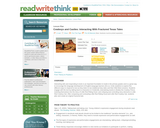
Students engage with the text by talking back to characters in Cinderella, dramatizing events in Bubba the Cowboy Prince, inserting themselves into the story of Little Red Riding Hood, and critiquing and controlling story elements in Little Red Cowboy Hat. After comparing and contrasting Little Red Riding Hood and Little Red Cowboy Hat, students plan and create an original fractured tale.
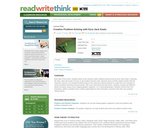
Students listen as the teacher reads different picture books by Ezra Jack Keats. Following the story, the students undertake class discussion and compare the different stories and plots using a story mapping graphic organizer. As a culminating project, students choose their own characters, define a problem and a solution appropriate for their characters, and then write their own problem-solving stories.
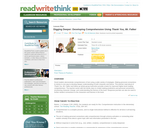
The teacher reads aloud Thank You, Mr. Falker. There is a follow-up whole-group instruction that provides a basis for improved higher-level reading comprehension. The teacher works with the whole class to model making predictions and personal connections, envisioning character change, and understanding the themes of the book. Response journals can also be used to further student connections to the characters and themes in the book.
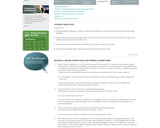
This lesson will allow students to demonstrate comprehension of a text by using a wide variety of strategies and by making personal connections to stories. Students will learn how to develop deeper understanding of character and theme, as well.
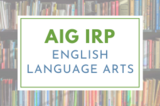
Students will read two similar versions of the same fairy tale, such as the traditional tale of The Three Little Pigs and The True Story of the Three Little Pigs by John Scieszka. Students will acknowledge differences in the points of view of the characters, including speaking in different voices of each character when reading dialogue. Students will use illustrations and details in the two versions to describe the characters, setting, events and plot through questioning and analysis. The product of the lesson will a graphic organizer used to compare and contrast the two different versions of this story. This lesson fits into the larger context of examining different genres in literature, learning the elements of the particular genre and comparing and contrasting literature. This lesson would fit well into a unit on fairytales, folklore, myths etc. This lesson was developed by NCDPI as part of the Academically and/or Intellectually Gifted Instructional Resources Project. This lesson plan has been vetted at the state level for standards alignment, AIG focus, and content accuracy.